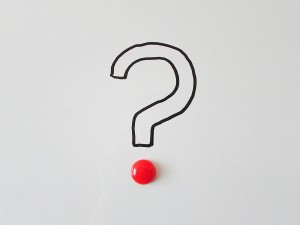What To Do With The Question Mark?

Everyone knows it, the question mark. In writing, it’s usage shows us which sentence is meant as a question. However, there are contexts in which you may be using the question mar incorrectly. Lets have a look at this seemingly oh so easy punctuation mark.
Forming a Question
As stated above, quotation marks serve the purpose of marking a written sentence as a question. In direct speech, where no punctuation marks exist, a question is indicated by rising pitch or tone at the end of a sentence. Sometimes, a lifted eyebrow does the trick as well.
But it’s not that easy. There are a few examples and exceptions in which apparent questions do not appear with a question mark in the end. Let’s have a look at these rules.
Using the Question Mark
The question mark is used:
- after a direct questions
- the last part of a statement is a question
Consider the following examples:
Are you sure about that? You are sure about that, aren't you?
The question mark is NOT used:
- after indirect questions
- after rhetorical questions
This can be seen in the following examples:
I wonder if he's sure about that. Why not take the risk.
Where to put it?
Now that it’s clear when and when not to use the question mark, the question remains where to put it in a sentence. Okay, that question may be very easily answered:
The question mark replaces the period at the end of a sentence. Thus, the following words are written with capital letters as well. Some authors, however, decide to ignore this rule in order to signal that questions were asked fast or demanding:
Are you really sure about that? You should reconsider it.
That was fairly easy. But where to put the question mark when quotation marks are involved? This can best be explained when looking at the following examples:
"What did he say to you?" She said she is "just fine"?
In the first case, the whole quotation is a question, e.g. in direct speech.
In the second case, the part inside the quotation marks is only part of the bigger question.
The Inverted Question Mark
In Spanish and some languages that are “related” to Spanish, an inverted version of the question mark is used at the beginning of a question to make the reader aware that a question is about to follow. However, if a sentence is a mixture of a statement and a question, the inverted question mark is placed at the beginning of the interrogative part.
¿Estás despierto? "Are you awake?" Estoy hablando con usted, ¿no? "I'm talking to you, don't I?"
Typing the inverted question mark without a Spanish keyboard is, of course, possible as well. Just press down the alt-key and enter the combination 0191 using the numbers pad of your keyboard. Et viola: ¿
